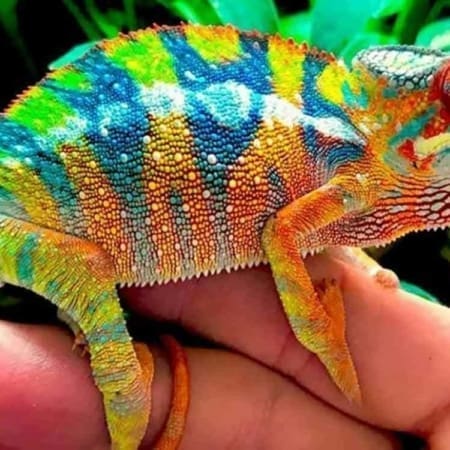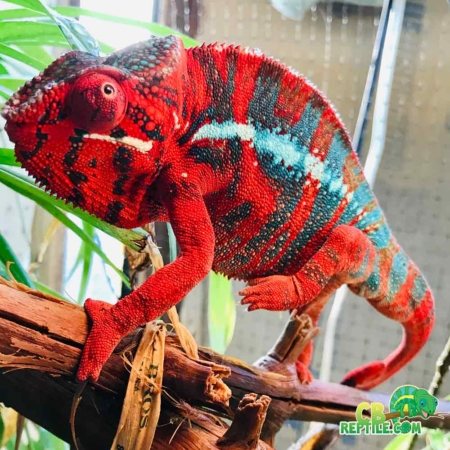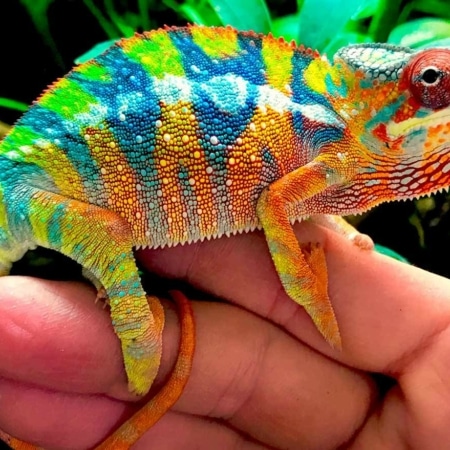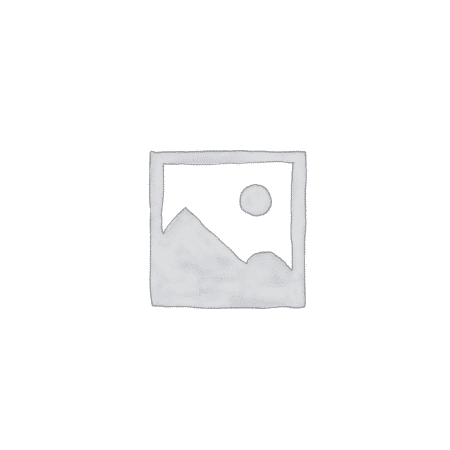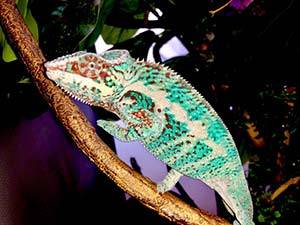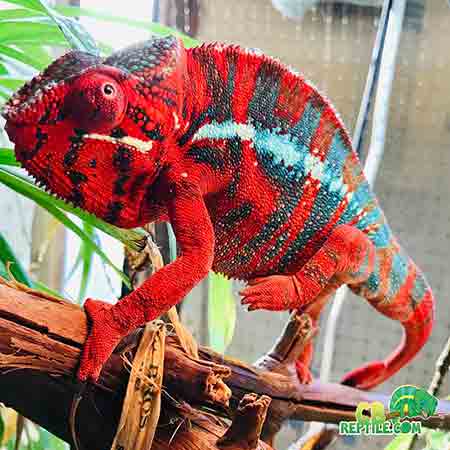Nosy Be Panther Chameleon Locale Guide
The Nosy Be panther chameleon locale similar to the Nosy Faly panther chameleon is legendary in the reptile world. When people think of an electric blue chameleon perched on a branch, they are often picturing a Nosy Be animal. Originating from the small island of Nosy Be off Madagascar’s northwest coast, this locale has become synonymous with rich blues, turquoise tones, and a cool, oceanic look that contrasts beautifully with the warmer Ambilobe and Sambava locales.
For keepers who want a chameleon that looks like it was carved from sapphire and sea glass, a well-bred Nosy Be is hard to beat. By choosing a captive-bred juvenile from the best panther chameleon breeder, you get the benefit of strong genetics, proper early care, and predictable adult coloration that truly represents the Nosy Be locale.
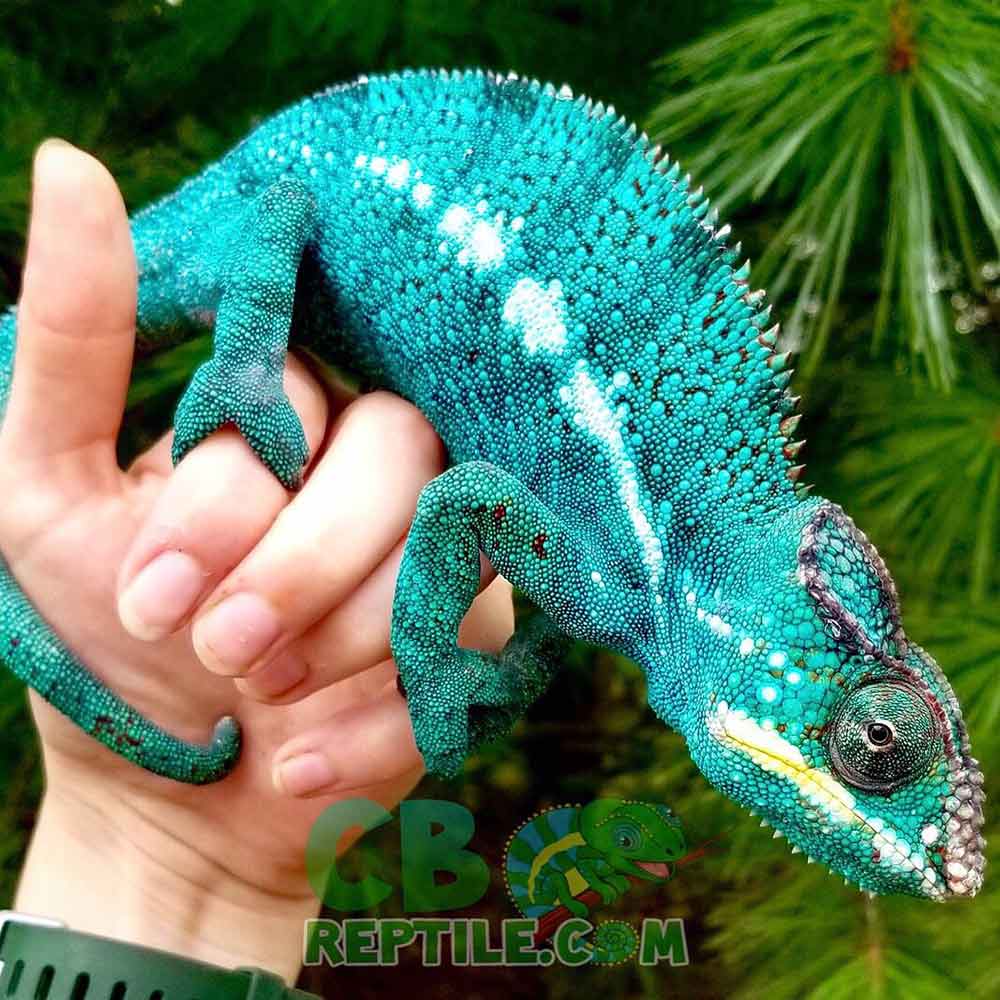
Origin of the Nosy Be Locale
Nosy Be is a lush, tropical island just off the northwest coast of Madagascar. The climate is warm and humid, with forested areas, secondary growth, and abundant canopy cover. Over time, the isolated panther chameleon population on Nosy Be developed a distinct set of color traits. While wild individuals can show some variation, many Nosy Be males are dominated by shades of blue, teal, and aqua, occasionally accented with green or white.
As export restrictions tightened and conservation awareness grew, the reptile hobby shifted heavily toward captive breeding. Today, most Nosy Be panther chameleons available in the United States and Europe are the result of long-term, carefully managed breeding projects. That means your choice of breeder directly influences the quality, health, and look of the Nosy Be you bring home.
Typical Nosy Be Panther Chameleon Coloration
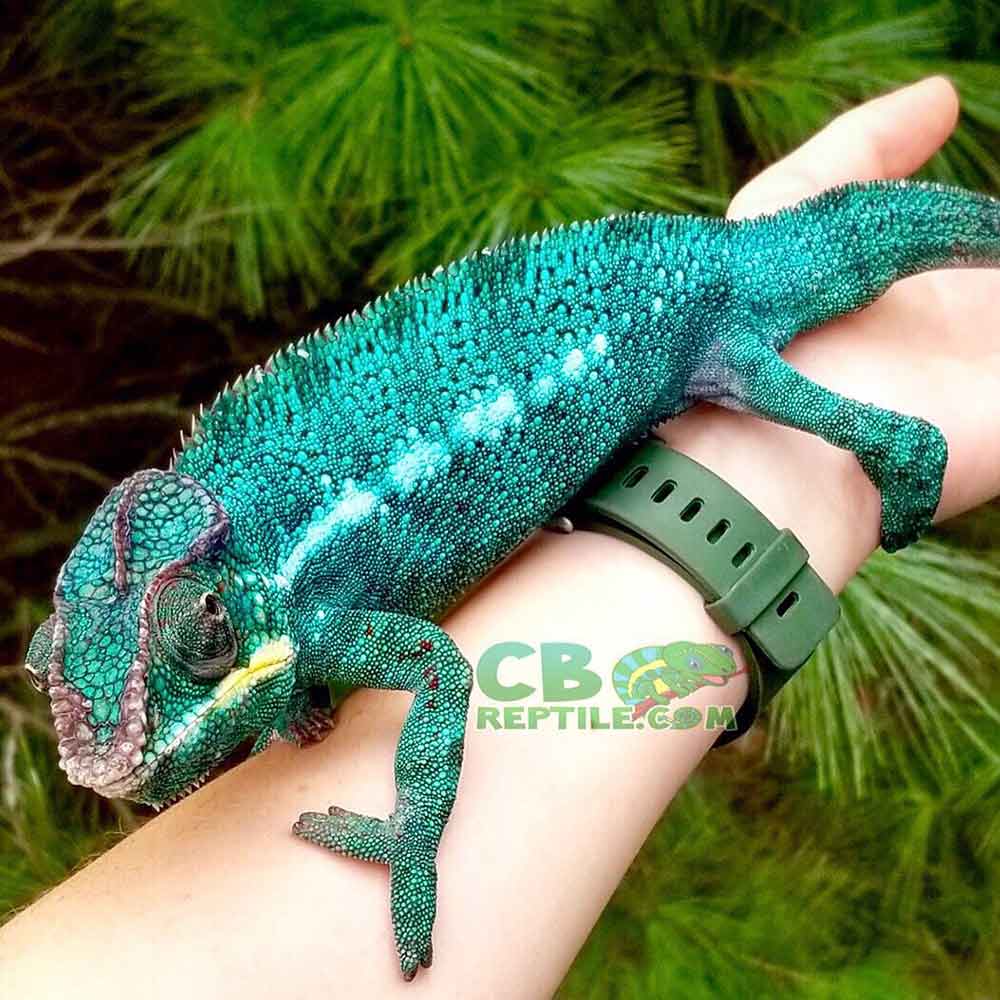
While no two Nosy Be panther chameleons are identical, there are several visual traits people associate strongly with this locale:
- Deep blue body color: Many males carry a base of rich blue that intensifies when they “fire up.”
- Turquoise and teal highlights: Lighter blue-green tones often appear on the flanks and face.
- Pale or white lateral lines: Some Nosy Bes have faint light stripes or spots, adding contrast.
- Minimal warm tones: Compared to Ambilobe or Sambava, Nosy Bes typically lack bright reds and oranges.
Nosy Bes can still surprise you. Some lines produce “high white” individuals with striking pale accents, while others lean toward darker, stormy blues. The best way to get a sense of what your future chameleon might look like is to review photos of the sire and dam from a reputable breeder.
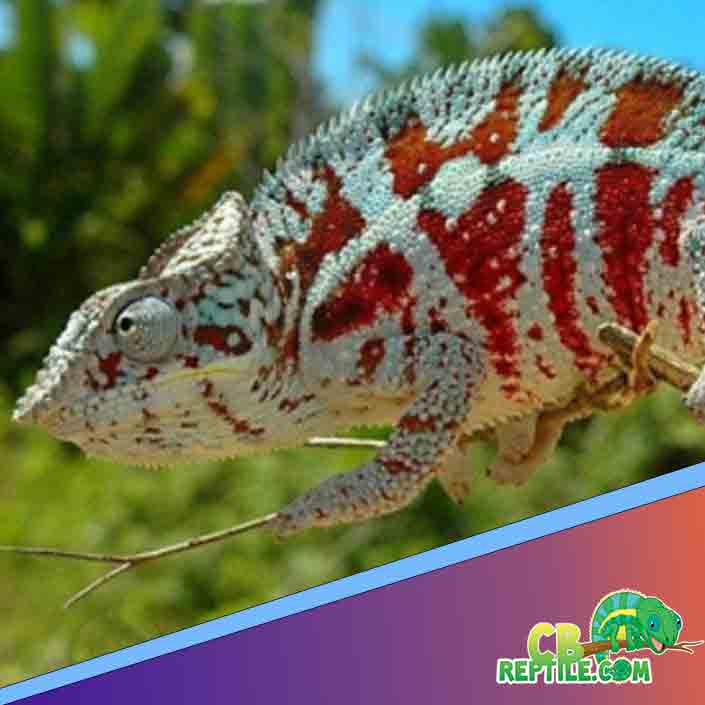
Nosy Be vs Ambilobe, Sambava, and Other Locales
One of the biggest decisions new panther chameleon keepers face is which locale to choose. Each has its own visual identity, but Nosy Be’s cool blue aesthetic sets it apart from warmer locales like Ambilobe or Sambava.
- Ambilobe: Typically multi-colored with reds, yellows, greens, and blue or red bars.
- Sambava: Often orange and red with green and yellow accents, very high contrast.
- Cap Est: Known for pinkish and reddish tones with soft gradients.
- Nosy Be: Blue-dominant, cool-toned, with a “tropical ocean” feel.
Many keepers eventually collect multiple locales, but for a first-time panther chameleon, Nosy Be is a standout choice if you want an animal with a clean, cohesive color palette rather than a blend of many different hues.
Temperament and Personality
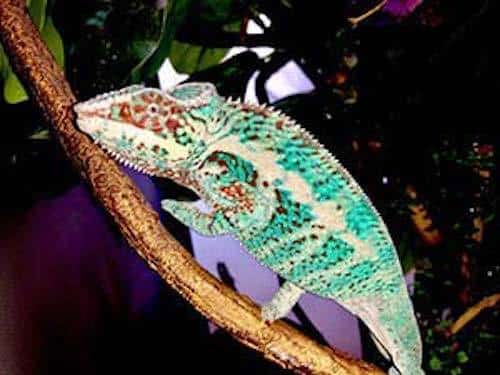
Temperament always varies between individuals, and each chameleon has its own personality. However, many keepers report Nosy Be males as relatively calm, observant, and tolerant of moderate human presence. They may watch you from their branches, adjust their position to maintain line of sight, and occasionally display brighter colors when stimulated by movement in the room.
Good early socialization and low-stress rearing environments help shape long-term behavior. A Nosy Be that was hatched and raised in stable, clean enclosures with proper hydration and lighting will usually adjust to a new home more quickly than one that had a rough start.
Ideal Enclosure Setup for Nosy Be Panther Chameleons
From a husbandry standpoint, Nosy Be panther chameleons require the same fundamental care as other locales. Tall screen or hybrid enclosures, strong UVB lighting, safe basking zones, and thoughtfully managed humidity cycles form the foundation of their environment. Live plants such as pothos, schefflera, and hibiscus create natural perches and helps support hydration.
A typical adult Nosy Be enclosure should:
- Measure at least 24 x 24 x 48 inches for a single adult.
- Include a basking area in the upper third of the cage.
- Provide multiple horizontal and diagonal branches for climbing.
- Offer dense foliage in the middle and lower regions for security.
The goal is to provide an environment that encourages natural chameleon behavior: climbing, basking, hunting, and exploring. When your Nosy Be feels secure, its colors will naturally intensify.
Feeding and Hydration for Nosy Be Chameleons
Nosy Be panther chameleons are insectivores with fast metabolisms. Juveniles should be fed daily, while adults do well on a schedule of smaller, frequent meals or every-other-day feeding depending on body condition. A varied diet of gut-loaded crickets, roaches, black soldier fly larvae, and other quality feeders keeps your Nosy Be in top shape.
Hydration is provided through misting and fogging, not water bowls. Nosy Bes, like all panther chameleons, drink droplets from leaves rather than standing water. Automated misting systems, nighttime fogging, and occasional dripper use all help simulate natural hydration patterns while keeping humidity within safe ranges.
Choosing a Nosy Be: What to Look For
When it comes time to pick a Nosy Be panther chameleon, there are several key points to keep in mind:
- Clear locale labeling: The animal should be clearly sold as Nosy Be, not “mixed locale” or undefined.
- Healthy appearance: Straight limbs, full tail, bright eyes, and strong gripping strength.
- Lineage photos: Whenever possible, view pictures of the parents to understand potential adult coloration.
- Captive-bred status: Captive-bred Nosy Bes adapt more easily and carry fewer unknowns than wild-caught animals.
When you browse a curated selection of chameleons for sale from a panther-focused facility, you’ll often see Nosy Be animals presented alongside Ambilobe, Sambava, and other locales. Taking time to study each listing helps you choose the perfect animal for your collection or display enclosure.
Why Your Breeder Choice Matters
Locale purity, color potential, and long-term health all depend heavily on who produced your Nosy Be. Facilities that specialize in panther chameleons invest years into refining their bloodlines, tracking which pairings produce reliable, strong blue tones and which lines maintain vitality over multiple generations.
If you are still mapping out your setup and deciding buy chameleon that truly represents the Nosy Be locale, selecting a breeder recognized as the best panther chameleon breeders will give you the best odds of receiving a healthy, accurately labeled, and visually impressive Nosy Be that you can enjoy for many years.

